DMSO for Strokes
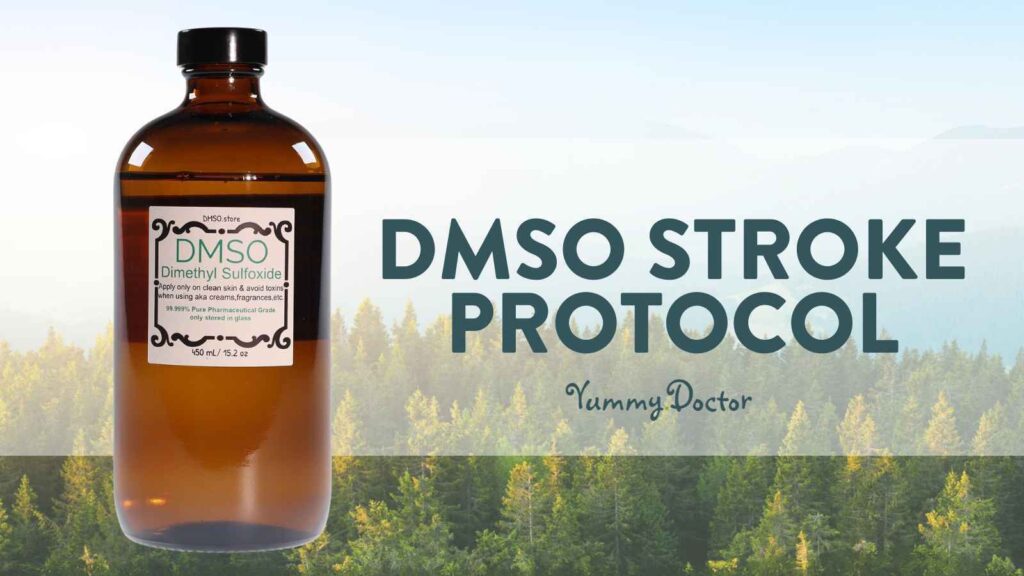
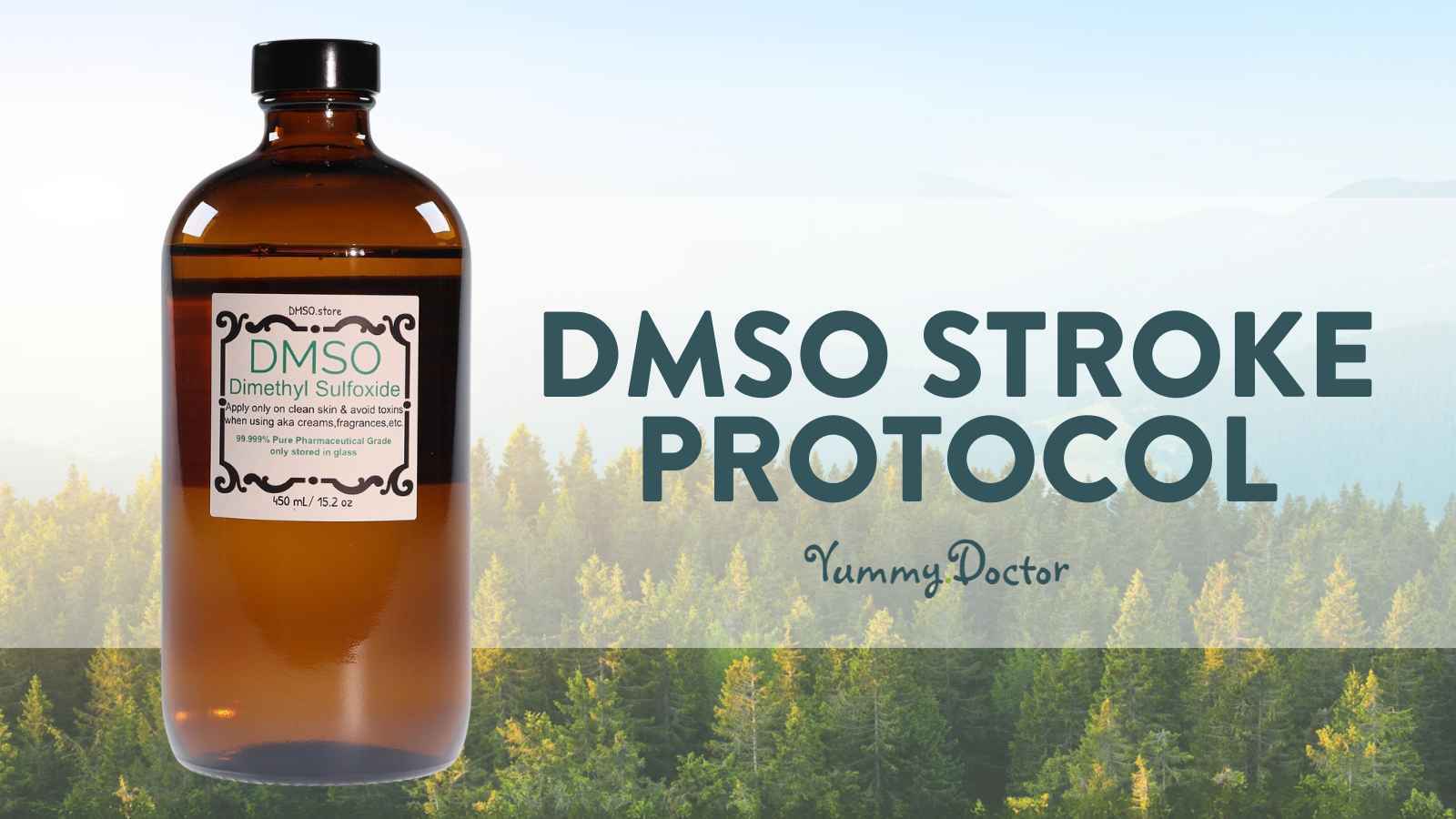
Dimethyl sulfoxide (DMSO) is an anti-inflammatory and analgesic compound that holds promise in managing a wide range of debilitating health conditions. DMSO is an approved pharmacological agent in more than 125 countries, and its safety and therapeutic effects are backed by nearly 50 years of research and more than 10,000 scientific articles on its biological implications (1).
DMSO should be used in the treatment of all stroke patients. DMSO has a number of properties that make it valuable in treating any problem involving the brain.
One very important property of DMSO is the ability to cross the blood-brain barrier. It is one of the few products to cross this protective barrier. The blood-brain barrier serves as a protective mechanism that exists between circulating blood and the brain. It protects the brain from substances that are toxic to brain tissue.
There is normally an accumulation of water in the brain as a result of the stroke because the stroke damage breaks down some of the cells. The fluid buildup in the cranium compresses other brain cells resulting in the death of more cells. DMSO actually helps to remove the excess fluid from the brain resulting in lower pressure and less brain damage. There can also be an accumulation of blood that should be removed if it is providing pressure on brain cells. The best way to remove this blood is through the use of DMSO. The DMSO helps other blood vessels take over the work of the damaged blood vessels, thereby potentially saving the life of the stroke victim.
DMSO also protects nerve cells from any disruption following stroke injury. Other products have been used for this, but DMSO provides better protection than the other products. Another important consideration is the fact that there are no harmful side effects when using DMSO. The proper use of DMSO could save the lives of many stroke victims each year.
When the patient has a stroke DMSO treatment should start as soon as possible. Emergency personnel should all be trained in the use of DMSO. Ambulance crews should at least give DMSO treatment topically to all stroke patients when the patient is first picked up. When the patient arrives at the hospital he can have DMSO added to his intravenous infusion. Delay in starting treatment can result in permanent brain damage or death.
Immediate treatment is desirable even if the stroke is relatively minor. With a minor stroke immediate DMSO treatment will minimize the possibility of any permanent damage. If it is a major stroke immediate treatment with DMSO can often prevent major permanent disability or death. Brain tissue is very fragile and deteriorates rapidly if it is deprived of oxygen. When treatment is delayed certain brain functions can be destroyed permanently or the patient can die.
Even though early treatment is desirable good results have been obtained when treatment is started long after the stroke.
Source link
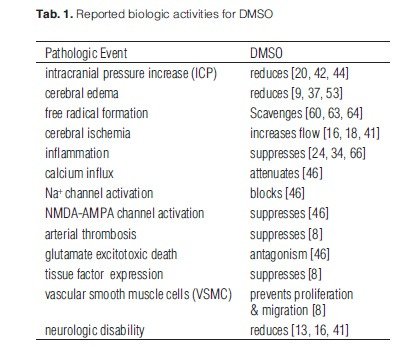
Image source
DMSO for Stroke GOALS:
Prevent death, remove excess fluids, reduce tissue injury, reduce excessive blood clot formation, reduce swelling, open blood flow to the brain, protect the nerves from damage, control inflammation, aid tissue recovery, and reduce scar tissue formation.
SCIENTIFIC EVIDENCE:
Dimethylsulfoxide (DMSO) is an amphipathic molecule able to solubilize polar and nonpolar substances and to cross hydrophobic membranes, is widely used to solubilize therapeutic drugs, and it has pleiotropic actions;[16] it has mainly anti-inflammatory, anti-edematous, and anti-oxidant effects, but also produces vasodilation, muscle relaxation, inhibition of platelet aggregation, has analgesic effects, inhibits cholinesterase, modulates cholesterol metabolism, and the action of other medications, and offers overall cellular protection against ischemic injury. In USA DMSO is FDA-approved for human use in chronic interstitial cystitis, and in EU has orphan drug status from EMA for treating traumatic brain injury[17] where it reduces brain edema, increases neuronal oxygenation, and lowers the activation of sodium channels involved in excitotoxicity.[18, 19] Dimethylsulfoxide is widely utilized for protecting and maintaining the vitality of transplanted organs and stem cells during transport and cryopreservation, and its pharmacokinetics is well-known from its use in stem cell transplantation.[20] In our combination, we used lower concentrations than commonly used in stem cell transplants, practically eliminating most adverse reactions-hemolysis when concentrations of 40% or higher are administered intravenously, or transient encephalopathy, cardiac and gastrointestinal toxicities when much higher volumes are administered to immunosupressed, oncological patients in advanced stages of disease.[18]
The cellular actions of DMSO are determined by its concentration through 3 main different mechanisms, which were observed empirically and characterized more recently at molecular level:[21] low concentrations produce cell membrane thinning and increased membrane fluidity; higher concentrations of DMSO induce into the membrane transient water pores, while at even higher concentrations (above 20% v/v), the bi-layer structure of the membrane disintegrates after dissociation of individual lipid molecules from the membrane.
DMSO is a very potent molecule in biological systems; it was reported that even at very low concentrations–between 0.00025%-0.1% v/v-it stimulates neuronal mitochondrial respiration and brain metabolism.[22] In motor nerve endings DMSO has fusogenic activity [23] and it facilitates the release of neurotransmitters from the vesicles in the synaptic space; recently it was reported that it induces fusion of cytoplasmic vesicles with the cell membrane.[24] It was also shown that DMSO has antiepileptic effect by reducing the glutamatergic excitotoxic phenomena[25] and that it reduces lipid peroxidation as well as protein carbonyl produced by ferrous chloride/hydrogen peroxide oxidative system in the rat brain.[26] DMSO inhibits platelet aggregation by reducing thrombin formation, inhibits proliferation of vascular endothelial cells and increases their apoptosis, and these actions may restrict expansion of ischemic vascular beds and help with re-permeabilization in the early stages of thrombosis.[27] DMSO was recently shown to increase the expression of transforming growth factor beta (TGF-β) on the surface of cellular membranes by 3-4 fold; a molecule with potent anti-inflammatory cytokine and anti-apoptotic activity, and which was also shown to increase survival of different cell types,[24] a very useful action in the ischemic neurons.
Neuroprotective Timing:
DMSO needs to be continued post-stroke ideally in both oral and topical application or via IV for at least 3 days for maximum success.
Effects of Intravenous Dimethyl Sulfoxide on Ischemia Evolution in a Rat Permanent Occlusion Model https://journals.sagepub.com/doi/10.1038/sj.jcbfm.9600095
A long-lasting therapeutic effect was observed in the 3-day survival experiment when DMSO was administered 1 h after ischemia onset. Interestingly, the effect was less pronounced compared with the 24 h survival group. This suggests that part of the acute neuroprotection was only temporary. It is possible that repeated doses of intravenous DMSO would more effectively maintain neuroprotection. Nevertheless, DMSO therapy resulted in 100% survival for 3 days, whereas mortality rate in untreated animals was 50%. A 3-day period as an indicator for long-term effects was chosen because earlier studies demonstrated that there is no further increase in infarct volume 2 to 3 days after onset of ischemia in this stroke model.
Dimethyl sulfoxide may also offer an option as a preventative measure in patients undergoing procedures with an increased risk of developing perinterventional brain ischemia, such as carotid stenting or coronary artery bypass surgery.
DMSO Stroke Protocol – IV:
“After I.V. administration of DMSO, there is an elevation in the amount of spinal cord blood flow to the region of trauma. One of the first things that happens after spinal cord trauma is that a reduction of oxygen and blood flow sets in, inasmuch as the blood vessels constrict or shut down… Without some treatment, the tissue swells. Eventually, this leads to paralysis. In a cerebral stroke, the animal will either become comatose or lethargic or die. With DMSO infusion immediately after injury (or stroke) all this is prevented. – Dr. Jack de Ia Torre, professor of physiology and neurosurgery at the University of New Mexico”
IV Protocol for Doctors:
The patient must first be hydrated with saline, ideally.
This is a cancer protocol that can be adapted: An infusion of 25 mL of 99.9% DMSO solution is mixed with 500 mL of sodium bicarbonate (SB) 1.4% solution and the equivalent of 1000 mg of potassium chloride and 1500 mg of magnesium sulfate. The infusions of DMSO-SB were performed by giving a continuous 5- day infusion with a 2-day break for a total of three cycles of 20 treatments. Thereafter, the patients continued with two infusions in 5 days with a 2-day break for 24 more treatments. The mean speed of drip was 60 drops per minute.
This is for spinal cord injuries and can be adapted: they recommend a dose of 1-2g/kg in a 28-40% solution of DMSO diluted with either physiological solution or 5% dextrose with water in an IV. However, to prevent DMSO-induced intravascular hemolysis (a reversible temporary side effect where red blood cells are lysed), it is recommended to use a less than 30% DMSO solution in an IV. However, water retention and hypernatremia has been reported with high DMSO dilutions, for instance < 10% in severe head trauma patients. This side effect can be avoided when a 25-35% DMSO solution is given in an IV.
Main Source
Source of the IV DMSO “Hoang” Protocols with US Equivalents
Given soon after a stroke, DMSO can dissolve the clot that causes the stroke, restoring circulation and avoiding paralysis. Once DMSO gets into the body either daubed on the skin, given in I.V., or by mouth, it permeates the body and crosses the brain barrier, so even taken orally it can improve circulation. Ideally, it should be I.V.
Even though DMSO 40% causes a prolongation of bleeding time, it is still indicated for use in treating embolic or hemorrhagic stroke. DMSO is superior to any other treatment for wounds to the brain where a great deal of bleeding is present (Morton, 1993).
One man who had a stroke at 7:30 AM refused to go to the hospital until after his wife had spoken with Dr. Stanley Jacob, which didn’t happen until 6:30 PM. Starting at 7 PM the day of the stroke, she gave him one ounce of 50% DMSO in a little orange juice every 15 minutes for two hours and then every half hour for two hours. The next day, her husband was better and soon returned to normal. A substance that can stop a stroke as it’s happening is something many might want in their home medicine chest.(Haley, 2000)
DMSO with Added Fuel
DMSO combined with a sugar that fuels energy production was well tolerated in elderly stroke patients, and could be of benefit in reducing neurological disability after stroke.
Ischemic stroke in elderly patients treated with a free radical scavenger – glycolytic intermediate solution: A preliminary pilot trial
Mustafa Karaça*, Erol Kiliç*, Betül Yazici*, Sedat Demir* and Jack de la Torre†
*Department of Neurosurgery, Ihlas Medical Center, Bursa, Turkey
†Department of Pathology, School of Medicine, University of California – San Diego, La Jolla, CA, USA
The safety and tolerability of a free radical scavenger with Na+channel blocking activity (dimethyl sulfoxide (DMSO)) combined with a glycolytic intermediate and high energy substrate (fructose 1,6- disphosphate (FDP)) were assessed in a mostly elderly patient group presenting with acute and subacute ischemic stroke. Eleven patients (average age 65) were given i.v. infusions of DMSO – FDP twice daily for an average of 12 days, while five control patients (average age 63) were given standard therapy. Safety and tolerability were evaluated by clinical adverse effects to drug therapy. Efficacy of DMSO – FDP was assessed by MRI lesion size, by magnetic resonance angiography of ischemic territory, and by a 5-point neurologic recovery scale that rated sensory-motor function and level of consciousness. Results suggest that DMSO – FDP administration is safe, well-tolerated and may be of benefit when given within 12 h after the onset of stroke symptoms. No significant changes in blood pressure, EKG, heart rate or hematology and chemistry profiles, were recorded in any patient receiving DMSO – FDP. Neurologic evaluation at 1, 3 and 6 months after treatments revealed that 7 of 11 (63%) patients given DMSO – FDP achieved ‘improved’ or ‘markedly improved’ status while 1 of 5 (20%) standard treated patients showed ‘improved’ status and only at the 3- month follow-up. This preliminary trial indicates that DMSO – FDP is well tolerated by this group of elderly patients and could be of benefit in reducing neurologic disability after stroke. [Neurol Res 2002;24:73 – 80]
DMSO Stroke Protocol – Oral and Topical:
At the first signs of a stroke, if the patient is conscious, administer by mouth (P.O.) a 50% solution of DMSO in water with a little honey or juice every 15 minutes for two hours and then every half hour for two hours. 1/2 ounce (15 ml or approximately 1 tbsp) DMSO (99.995% adjust accordingly if you have a 90% DMSO on hand) in 1/2 ounce distilled or RO water (if you don’t have it use what you have available, even juice, just no tap water) mixed with 1 tsp of honey or other natural sugar, immediately. Give no higher a percentage dose than 50% total concentration of DMSO. Wash the skin with a clean cloth. Rub 1 tablespoon of 80-90% DMSO over the neck, chest, and back, concentrating over the spine, as well as over the temples and scalp if possible. It is also advised to apply magnesium oil over as much of the DMSO-covered skin as is feasible to assist the detoxification effect of the DMSO. If the patient is unconscious, apply the DMSO and magnesium topically and bring some with you to the emergency room to apply more within the next 30 minutes topically. A 50% mixture of DMSO with magnesium can also be applied every hour for the next 3 hours after the first 2 steps of the protocol have been given. More details are below.
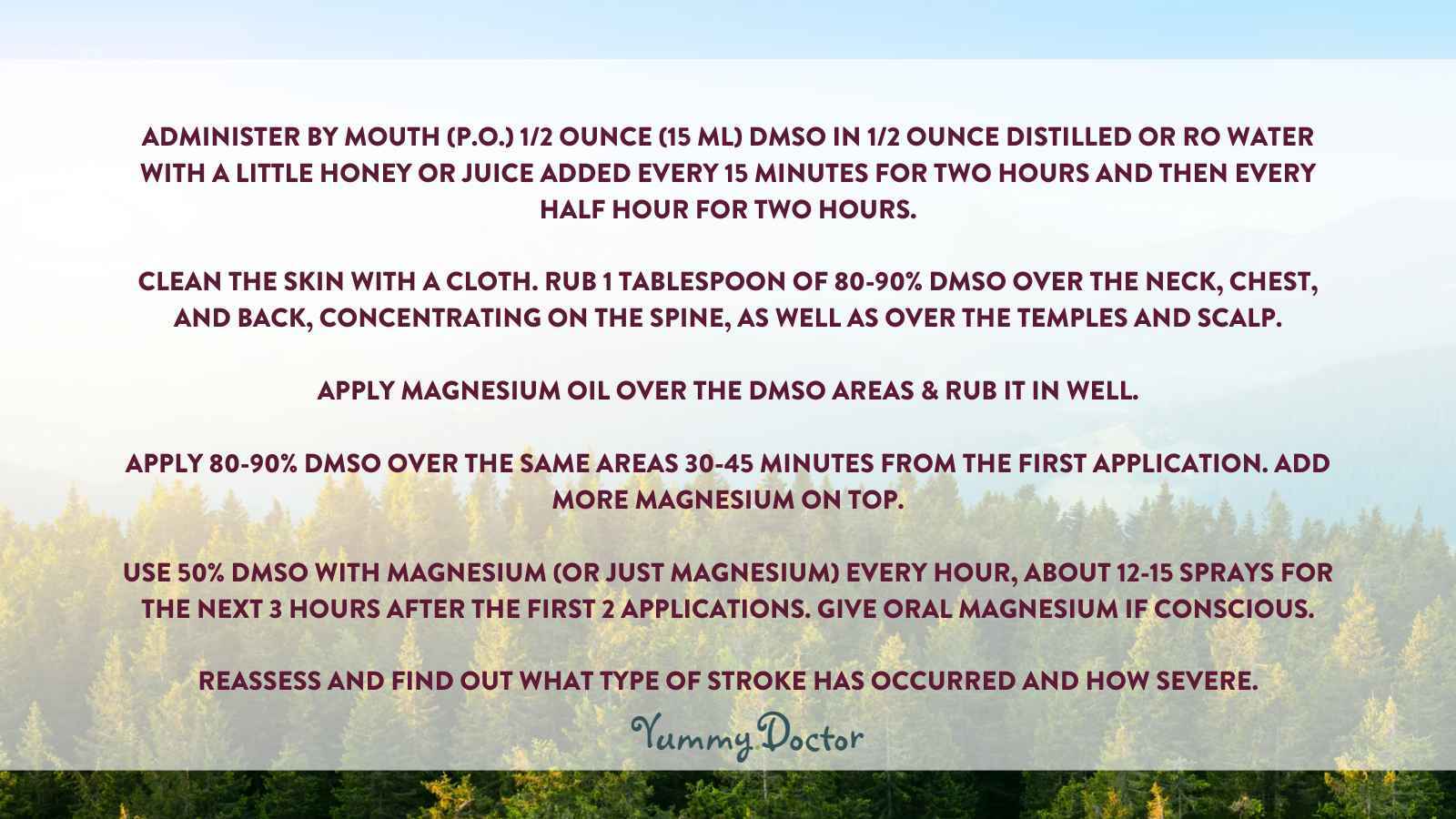
To clarify with steps:
1) Administer by mouth (P.O.) 1/2 ounce (15 ml) DMSO in 1/2 ounce distilled or RO water with a little honey or juice added every 15 minutes for two hours and then every half hour for two hours.
2) Wash the skin with a warm, wet, clean cotton cloth. Rub 1 tablespoon of 80-90% DMSO over the neck, chest, and back, concentrating on the spine, as well as over the temples and scalp. This can be strong, producing redness, itchiness, and even hives. Do not be alarmed. It will fade and return to normal. A lower concentration can be applied if you are concerned about skin sensitivity (50-70%)
3) Apply magnesium oil over the body and rub it into the skin well overtop of the DMSO-applied areas.
4) Wipe down the skin again. Apply another layer of 80-90% DMSO over the same areas 30-45 minutes from the first application. Always use clean hands. If you do not wish to touch it (as it is a fully transdermal substance and one that can carry other things with it), apply it with cotton balls or a new, clean natural bristle paintbrush. DMSO will dissolve gloves. You can use pure 99.995% DMSO, however, expect redness, hives, and if used repeatedly a temporary, leathery skin appearance. Again, this will fully recover once the DMSO is halted. To learn everything about DMSO safety, take a flip through my user-friendly book, it’s a handy guide when you need to make a decision about concentration.
5) Use 50% DMSO with magnesium (or just magnesium) every hour, about 12-15 sprays for the next 3 hours after the first 2 applications. Oral magnesium can also be given if the patient is conscious.
6) Reassess and find out what type of stroke has occurred and how severe.
If the patient is extremely tiny in weight, adjust amounts accordingly. This is a protocol for an adult. Doses in a child must be dropped to half or less depending on size. DMSO with magnesium and step 1 (above) oral protocol can be ample if this is all you can manage. Always continually assess the patient for improvement. Use watchful caution with administering. Do not administer in high doses if the person has been consuming alcohol. Stop the DMSO if the patient has a hypersensitivity reaction, like nausea or vomiting. Continue DMSO and magnesium therapy at home, including other healing methods that assist stroke recovery.
Expanded Protocol:
Systemic enzymes: Serrapeptase with nattokinase (clot control, prevents and removes scar tissue)
Internal as well as topical magnesium (hundreds of functions, speeds up responses, liver and hormone support)
High dose vitamin C (rapid tissue repair, tissue integrity)
Vitamin E (tissue repair, blood viscosity)
Potassium (fluid balance, brain function)
MMS/CDS – (tissue recovery, electron lending) available through our private club (info@dmso.club)
Cod Liver Oil (inflammation control, tissue recovery, mitochondrial function)
Niacin (brain recovery, blood flow repair, neuroplasticity support)
Red laser therapy or Terahertz frequency therapy (email support@yumnaturals.net for more info and to purchase) (structures cells EZ water zones, increases electrical potential, nerve and brain recovery, cell communication)
B12 with methylfolate (nerve repair, specifically myelin sheaths)
St. Johnswort botanical (cannot be taken with most prescription medications) (nerve tissue repair)
Also, look into Vitamin D, probiotics, Strauss Heart Drops and CoQ10.
We all know the old adage, an ounce of prevention is worth a pound of cure. Stay away from vaccines and drugs, review your food regime, add important supplements and exercise into your lifestyle, and begin to get familiar with DMSO in advance. Have an acute care plan in place in case of any cerebral or vascular accident and have the protocol printed out and parked next to your bottle of DMSO so you can act quickly if you need to.
If you want to learn more about DMSO in an easy-to-read guide with protocols and recipes, my book has a lot of value: Healing with DMSO
Also available HERE and HERE. I have many videos and articles available for free so you can take charge of your health HERE.
With truth, love, and support,
Amandha D Vollmer (ADV)
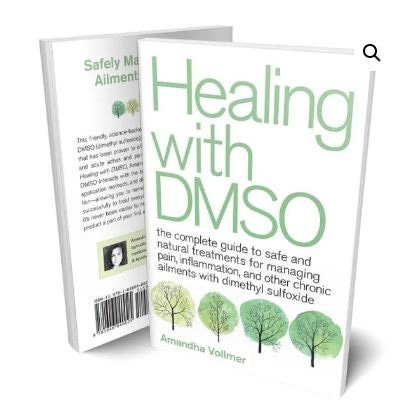
Get DMSO here:
https://dmso.store/
Disclaimer: The products and claims made about specific products and protocols are not meant to diagnose, treat, cure, or prevent disease or replace traditional treatment. Use at your own risk.
Join Amandha’s Private Community!
Participate in specific health related groups, engage with holistic healers, educate yourself with step-by-step online courses, join Amandha in weekly video chats, and reach the ultimate natural health lifestyle.
![]()
Amandha D Vollmer (ADV)
BSc, Herbalist, Reiki Master,
Holistic Health Practitioner,
Degree of Doctor of Naturopathic Medicine
Websites:
Bringing the Wisdom of Nature Education: https://yummy.doctor/
YumNaturals Emporium Store: https://yumnaturals.store/
DMSO Products: https://DMSO.store
Healing with DMSO Book: https://healingwithdmso.com/
Support my Work by Making a Donation:
YUM BTC (Bitcoin) – bc1qayv9rjzlpc8hlc0t5d80le8u0g72f5p75570hz
YUM ETH (Ethereum) – 0xD4AE2Ae316435e4e68DC0c5D2131c2252fD9B0c4
https://yumnaturals.store/product/general-fee-or-donation/
https://www.patreon.com/yumnaturals
Telegram Chats:
1. ADV’s Main Channel: https://t.me/amandhavollmer
2. ADV’s Legal/Lawful Templates Group: https://t.me/HDoT_Templates
3. ADV’s Local Ontario Group: https://t.me/ontarioawake
Advice Disclaimer:
The website content, including but not limited to blogs, newsletters and videos with Amandha Vollmer are intended for general information only, and are not intended to be a substitute for legal, medical or financial advice, and should not be construed as legal, medical or financial advice applicable to your particular situation. No attorney-client or confidential relationship is or will be formed by use of this website or the contents within.

